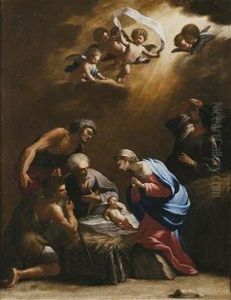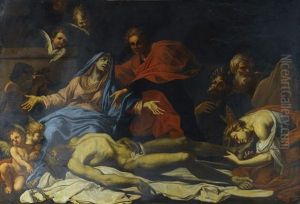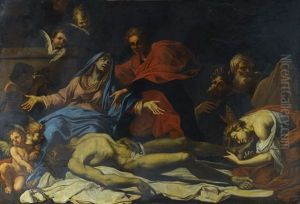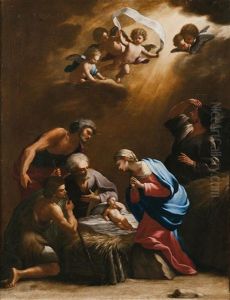Francesco Di Maria Paintings
Francesco Di Maria was an Italian Baroque painter active mainly in Rome during the 17th century. Born in 1623 in the town of Palermo, Sicily, Di Maria moved to Rome, where he became influenced by the works of the Baroque masters working there. He is often considered a follower of the Bolognese painter Guido Reni and was known for his refined and graceful style, which was characteristic of the Roman Baroque movement.
While not as widely recognized as some of his contemporaries, Di Maria's work was appreciated in his time for its elegance and clarity. He painted a variety of subjects, including religious scenes, portraits, and mythological subjects. His style is characterized by its delicate color palette, soft lighting, and gentle forms, reflecting the influence of Reni and perhaps also of Domenichino, another leading painter of the era.
Di Maria’s work can be found in several churches in Rome, including San Carlo ai Catinari, where his altarpiece 'The Vision of St. Anne' is located. He was also active in the decoration of palaces and contributed to the frescoes in the Palazzo Altieri. Despite his achievements, Di Maria did not establish a significant workshop or school, and his followers were few. This, combined with the later dominance of more vigorous Baroque styles, may have contributed to his relative obscurity following his death in 1690.
Throughout his career, Di Maria was well regarded by patrons and his works were collected by notable figures of his time. Nevertheless, his legacy has been somewhat overshadowed by the more famous artists of his period and geographical locale, such as Gian Lorenzo Bernini, Pietro da Cortona, and Caravaggio. Research into his oeuvre has been limited, and as a result, he remains a somewhat peripheral figure in the study of Baroque art. Still, for those who study the period, his work represents an important facet of the era's artistic diversity and the elegance of the Roman Baroque style.




